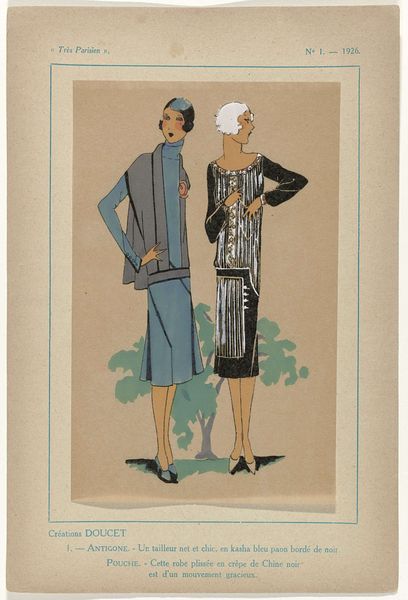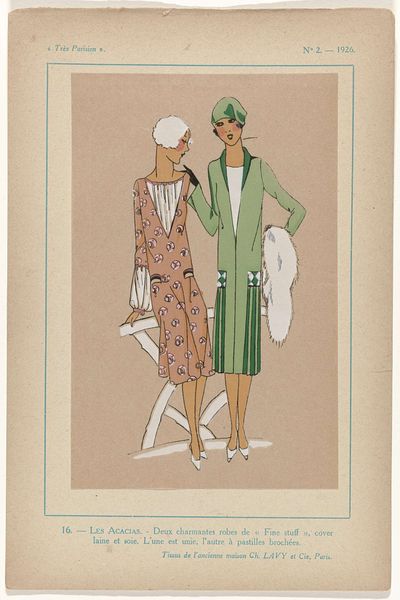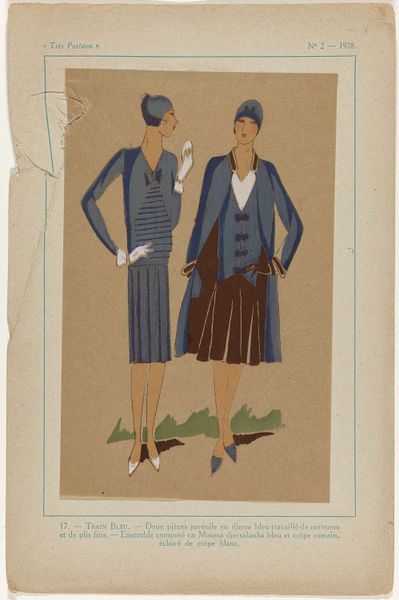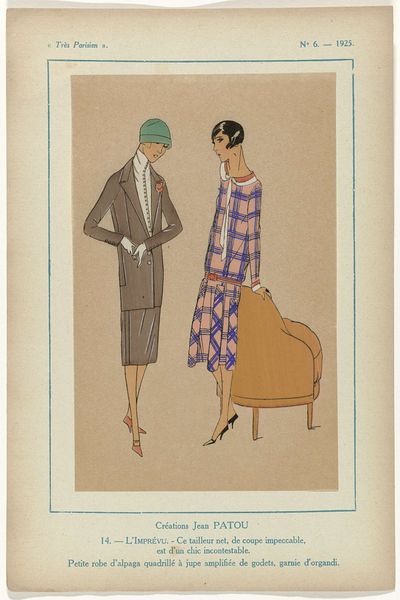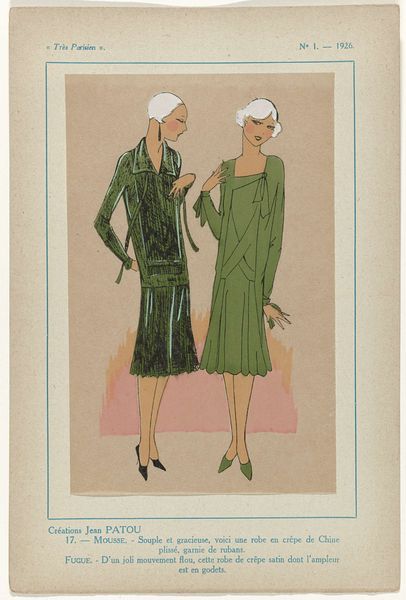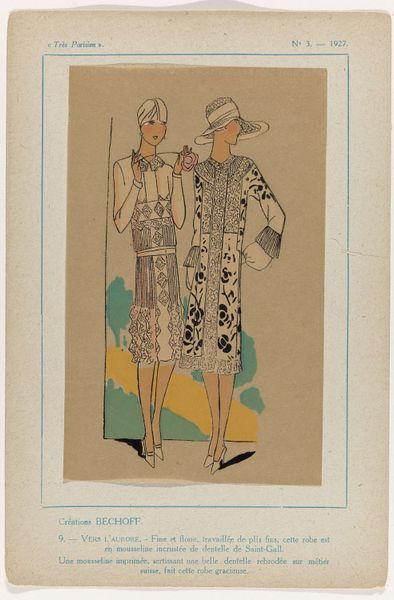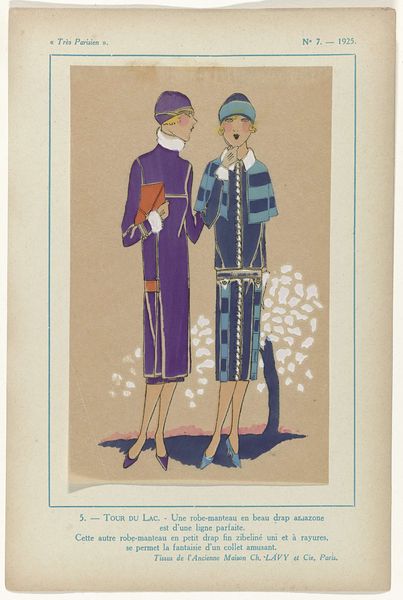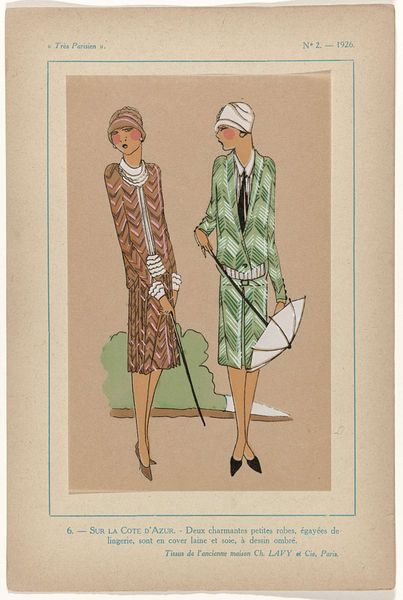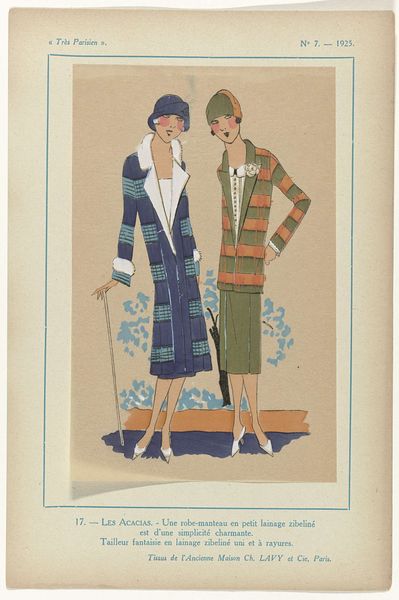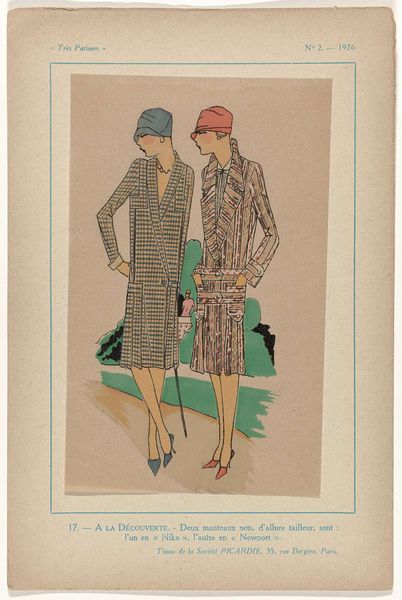
Très Parisien, 1927, No. 3, Pl. 13: Créations PHILIPPE et GASTON - SUR LE PRÉ 1927
0:00
0:00
drawing, print
#
portrait
#
art-deco
#
drawing
# print
#
figuration
#
flat colour
#
historical fashion
#
line
#
watercolour illustration
#
genre-painting
#
decorative-art
#
dress
Dimensions: height 195 mm, width 120 mm, mm
Copyright: Rijks Museum: Open Domain
Curator: Let’s take a look at "Très Parisien, 1927, No. 3, Pl. 13: Créations PHILIPPE et GASTON - SUR LE PRÉ," a print by G-P. Joumard from 1927. It resides here at the Rijksmuseum. Editor: My first impression is "muted elegance." It's delicate, almost watercolor-like in its softness, and that restrained palette is so typical of Art Deco. But those dresses – talk about flapper chic! Curator: Indeed. The image functions as an illustration of high society at the height of the Jazz Age in Paris. We can examine it as a keyhole view of the social aesthetics during the Roaring Twenties, displaying wealth, style, and a newly defined feminine identity emerging after the First World War. Editor: Precisely. The way Joumard employs the technique suggests an assembly-line approach – flat planes of color, simplified forms – pointing to its potential for mass production and widespread dissemination, possibly within fashion magazines? How fascinating to consider this in relation to craft and material culture. Are these unique couture pieces or an early form of ready-to-wear replicated for the masses? Curator: It certainly raises important questions about accessibility and democratization. Though presenting couture, these images broadcast the aspirational lifestyle associated with Parisian fashion, a crucial part of France’s post-war image building and cultural influence. The decorative style flattens depth which promotes immediate access and aligns well with printed media consumption of the period. Editor: I agree. You see it not only as a matter of design and aspiration but also its role within globalized market capitalism! Thinking about who was producing the clothing and the paper… where were the textiles sourced? I am captivated by the global exchange that the work subtly suggests. Curator: It's an insightful layer. And it pushes us to reflect further. It invites reflection on the shifting values within art history—from solely focusing on elite fine art to considering print media as significant conveyors of cultural trends and societal aspirations. Editor: Definitely! It gives new meaning to how we regard fashion illustration not merely as commerce or marketing but rather a record of global connections expressed via material culture, manufacturing practices, social mobility, and lived experiences. Curator: It’s a print that captures more than just clothing. It's about projecting the values of an era. Editor: And a powerful reminder to always look deeper, past the image and consider its materiality and place in the grand economic chain!
Comments
No comments
Be the first to comment and join the conversation on the ultimate creative platform.
